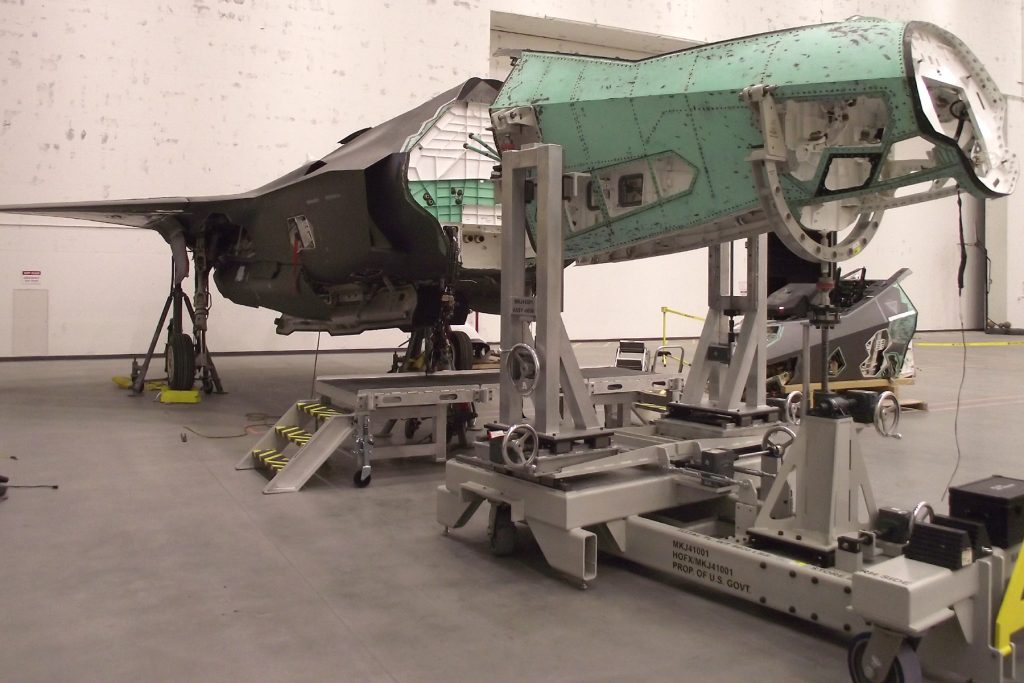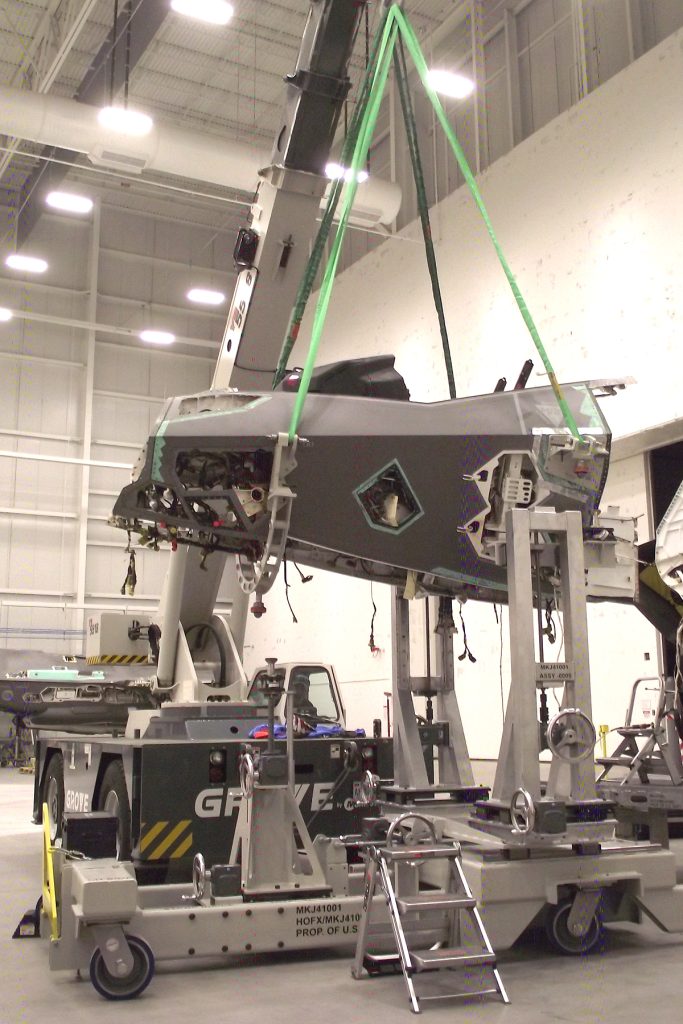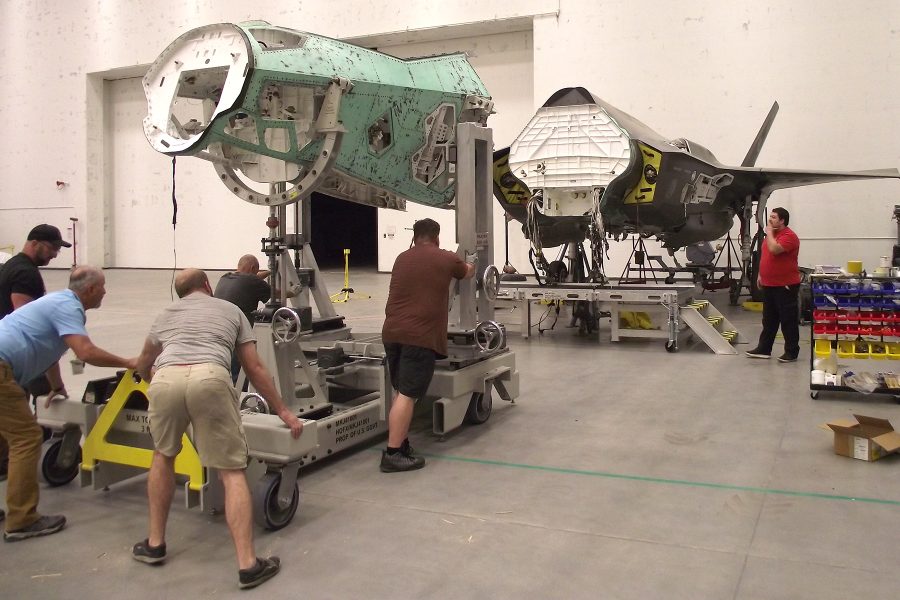The Air Force can’t get enough new F-35s fast enough, so it’s doing everything it can to preserve damaged jets and make them new again–even if it takes two to build just one.
In the first-ever effort to salvage F-35s from the junk heap, a team of highly skilled technicians is combining the remains of two damaged aircraft into what officials are calling “Franken-bird.”
The new jet will rise like a phoenix from the ashes of two earlier models:
- AF-27, which suffered a severe engine fire in 2014 at Eglin Air Force Base, Fla., and
- AF-211, which survived a landing gear collapse in 2020 at Hill Air Force Base, Utah.
The AF-27 airframe has been recycled as an Air Battle Damage and Repair trainer at Hill and AF-211, including its engine, have been preserved since the gear collapse, which severely damaged its nose. Dave Myers, lead engineer at the F-35 Joint Program Office Lightning Support Team, told Air & Space Forces Magazine that combining the best of both aircraft will result in a fully capable aircraft.
“There is no degradation,” Myers said. “The repair itself would not degrade any of its capability.”
A new F-35 Lightning II costs more than $80 million and its maker, Lockheed Martin, is producing jets as fast as it can. So when an aircraft is damaged, it can’t quickly be replaced. Salvaging all the parts and combining them into one good fighter should prove cost effective, provided USAF can demonstrate the resulting aircraft is sound.
To combine the two, Myers said, AF-27’s nose is being separated from its body and then reassembled onto AF-211, along with additional updates and technical adjustments resulting in a fully functional F-35. New parts, including a section of the aircraft’s outer skin, will also be incorporated to produce a fully viable jet.
“The fixed skin on the belly of the aircraft behind where the mate joint is was also damaged, and so that skin is being replaced,” Myers said. In addition, “parts in the nose that were destroyed during the mishap are being replaced.”
If successful, the rebuild will provide a framework for reclaiming partially damaged jets, both F-35s and potentially other aircraft, as well.
Led by the F-35 JPO, the team crafting the “Franken-bird” includes Airmen and civilians from the 388th Fighter Wing, the Ogden Air Logistics Complex, and contract technicians from Lockheed Martin, the Lightning II’s prime contractor, among others. “The core group repairing the aircraft is around 20,” Dan Santos, the Heavy Maintenance Manager at the F-35 JPO, told Air & Space Forces Magazine. Most are Lockheed Martin engineers, “and we are relying heavily on the unit for organizational level support.”

The project has been a long time coming. Groundwork began nearly four years ago, in January 2020, when the JPO inquired about what Lockheed Martin learned while repairing damaged F-22s. The JPO already was claiming salvageable components from damaged F-35s, improving maintenance and operations, and finding ways to make use of parts, such as using the AF-27 as an ADBR trainer.
But the “Franken-bird” represents the boldest undertaking yet, said Scott Taylor, Lockheed Martin’s lead mechanical engineer in a release.
“All of the aircraft sections can be de-mated and re-mated theoretically, but it’s just never been done before,” Taylor said. Proving it can be done could be a game changer. USAF is using the project as a pathfinder, documenting every step to generate standardized procedures for future reclamation projects.
Santos said progress is good and that the team is about two months ahead of schedule so far. Barring delays, it appears they could be fully operational well before their March 2025 goal, Santos said.
“Not only will this project return a combat asset back to the warfighter, but it opens the door for repairing future mishap aircraft using tooling, equipment, techniques, and knowledge developed” for that purpose, Santos said.

